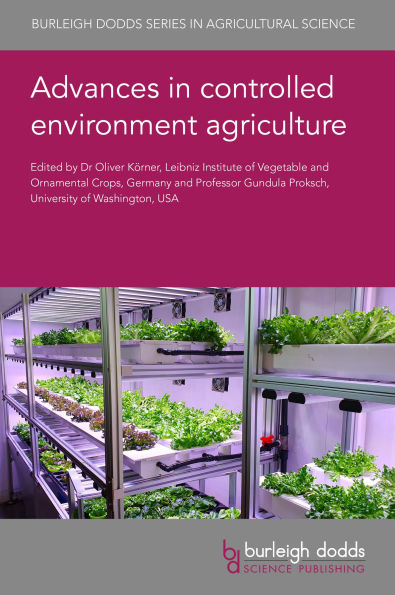With concerns about the impact of global warming in increasing the risk and unpredictability of adverse weather conditions, there is growing interest in various types of controlled environment agriculture (CEA), from the relatively simple screen and net houses designed to create more favourable microclimates for crops to hermetic plant factories with fully-controlled environments.
Advances in controlled environment agriculture provides a detailed review of current research on different CEA systems, including those that rely on simple passive climate control strategies, to approaches that support a high level of technical control. The book also considers ways of optimising resource use, including energy, light, water nutrients and substrates, as well as implementation strategies for rural, peri-urban and urban applications.
The book builds on a successful range of earlier volumes published by Burleigh Dodds Science: Achieving sustainable greenhouse cultivation (2019), Advances in horticultural soilless culture (2020) and Advances in plant factories: New technologies in indoor vertical farming (2023).
With concerns about the impact of global warming in increasing the risk and unpredictability of adverse weather conditions, there is growing interest in various types of controlled environment agriculture (CEA), from the relatively simple screen and net houses designed to create more favourable microclimates for crops to hermetic plant factories with fully-controlled environments.
Advances in controlled environment agriculture provides a detailed review of current research on different CEA systems, including those that rely on simple passive climate control strategies, to approaches that support a high level of technical control. The book also considers ways of optimising resource use, including energy, light, water nutrients and substrates, as well as implementation strategies for rural, peri-urban and urban applications.
The book builds on a successful range of earlier volumes published by Burleigh Dodds Science: Achieving sustainable greenhouse cultivation (2019), Advances in horticultural soilless culture (2020) and Advances in plant factories: New technologies in indoor vertical farming (2023).

Advances in controlled environment agriculture
500
Advances in controlled environment agriculture
500Related collections and offers

Product Details
| ISBN-13: | 9781835451472 |
|---|---|
| Publisher: | Burleigh Dodds Science Publishing |
| Publication date: | 09/22/2026 |
| Series: | Burleigh Dodds Series in Agricultural Science , #178 |
| Sold by: | Barnes & Noble |
| Format: | eBook |
| Pages: | 500 |
